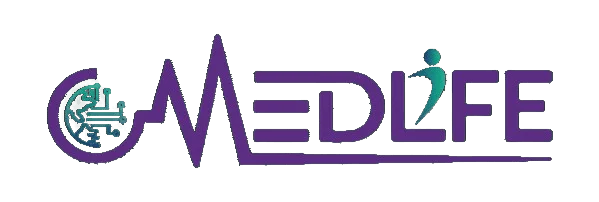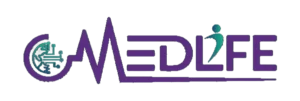Accurate medical billing is one of the main reasons why a chiropractic practice thrives. While the un-accurate billing always chases payments, gets denials, or lives on edge due to audits. The CPT (Current Procedural Terminology) is used to identify what treatment you provided. The ICD‑10 (International Classification of Diseases, 10th Revision) is used to identify why you provided it in the first place.
Use the right CPT matched with a precise ICD‑10 diagnosis, and claims clear fast. Mis‑coding or vague diagnoses (especially generic or outdated ones) almost always get rejected.
Mastering these codes means you follow payer rules, get paid faster, and protect your practice. If you want your revenue to reflect your work and reduce stress, learning chiropractors medical billing codes aren’t optional.
Need Help with Chiropractor Billing?
Book a free consultation to simplify your billing, speed up reimbursements, and cut down denials.
TALK TO AN EXPERTEssential CPT Codes for Chiropractors
Here are the medical billing codes for chiropractors you’ll be using most in chiropractic practice:
- 98940 — spinal manipulation of 1–2 regions
- 98941 — spinal manipulation of 3–4 regions
- 98942 — spinal manipulation of 5 regions
Then there are evaluation & management (E/M) codes (99201–99215) for new or established patients. These are used when you’re documenting services outside of or beyond the spinal manipulation itself.
You’ll also work with therapeutic procedure codes like:
- 97110 — therapeutic exercise
- 97112 — neuromuscular re‑education
- 97140 — manual therapy
These are especially common in rehab-focused treatment plans.
It’s not just about applying the right code—it’s about how you use them together. For instance, using 97140 and a spinal manipulation code on the same visit requires more than just clean paperwork. If both are performed in the same region without modifier 59 or XU, you’re likely to see denials.
Documentation should clearly state body regions treated, time spent, goals of therapy, and medical necessity. Modifiers help communicate that the services are separate and distinct. Without them, many insurers will bundle or reject the claim. Understanding these rules up front makes your billing cleaner, faster, and less risky.
Common ICD‑10 Diagnostic Codes Used in Chiropractic Practice
ICD‑10 codes explain why you applied care. Most chiropractic diagnoses involve spinal, muscular, or nerve-related dysfunctions. These codes must align with the clinical reasoning behind your treatment plan.
Examples include:
- M54.2 — cervicalgia (neck pain)
- M99.03 — segmental dysfunction, lumbar region
Accurate coding supports medical necessity, especially when payers review the logic behind your treatments.
Avoid using outdated or overly broad codes. For example, M54.5 for low back pain was split into M54.50, M54.51, and M54.59. Many claims get denied simply because providers haven’t updated their diagnosis codes.
When documenting your diagnosis, cover onset date, location, quality of pain, what worsens or relieves it, and patient response to past care.
Supporting notes should include subjective complaints, physical exam findings, and functional limitations. These are not optional; they form the backbone of medical necessity.
The more specific and consistent your diagnosis, the more solid your CPT/ICD‑10 combination becomes. That matters during audits, appeals, and everyday reimbursements.
Billing Code Compliance and Best Practices
Even if you know the right codes, common mistakes still pop up and cost you. These include wrong modifiers, improperly paired procedures, or vague diagnoses.
For example: billing 97140 (manual therapy) and manipulation (98940‑98942) in the same region without a modifier (such as modifier 59 or relevant X‑modifiers) is a red flag. Similarly, E/M codes billed the same day as manipulation must represent significant, separate work and documentation otherwise you’ll need to include modifier 25.
Always keep payer policies visible; they change often. Documentation must show how many regions you manipulated, how long treatment took, what modalities/methods you used, and precise diagnosis details. Audit your own claims regularly to find patterns of denials. Keeping up with updates in CPT, ICD‑10, and payer rules will save you time, stress, and money.
Tools and Resources for Chiropractic Coding and Billing
You don’t have to go it alone. These tools make coding clearer:
- Billing software (ChiroTouch, AdvancedMD) often has built-in CPT/ICD‑10 lookup + audit‑alerts.
- Official sources: AAPC and AMA for CPT updates; CMS for ICD‑10 and payer policy.
- Coding guides, newsletters for changes like diagnostic code splits or NCCI edits.
- Continuing education courses that focus on real claim examples, modifier usage, documentation standards.
Also, keep a reference table of your most used codes, modifiers, and documentation phrases. When billing under pressure, that kind of cheat‑sheet is gold.
Mastering Billing Codes to Optimize Your Chiropractic Practice
Getting billing codes right is important because it powers revenue, credibility, and growth. When you master manipulation codes like 98940‑98942, use accurate ICD‑10 diagnoses, apply modifiers correctly, and document well, your claims get paid faster with fewer headaches.
Investing in compliant tools, staying current with coding changes, and training your team gives you more predictable income, fewer denials, and less stress. Your patients come for relief so let your billing systems bring relief to your finances too. You deserve a practice that works as hard as you do.
Frequently Asked Questions
How often should chiropractors update their billing codes?
At least once a year. And whenever code books or payer rules change. Missing things like the M54.5 split will lead to denials.
Can chiropractic adjustments be billed under physical therapy codes?
Generally no. Adjustments/CMTs have their own CPT codes. Physical therapy codes cover exercises, manual therapy, modalities. If you combine them with CMT, services must be distinct by region or use modifiers, or else players may bundle or deny.
What documentation is required to support chiropractic claims?
You need: subjective history, exam findings, ICD‑10 diagnosis, treatment details, region manipulated, duration, patient’s response. If you bill E/M or therapy codes on the same day as manipulation, documentation must reflect separate medical decision making or distinct services.


